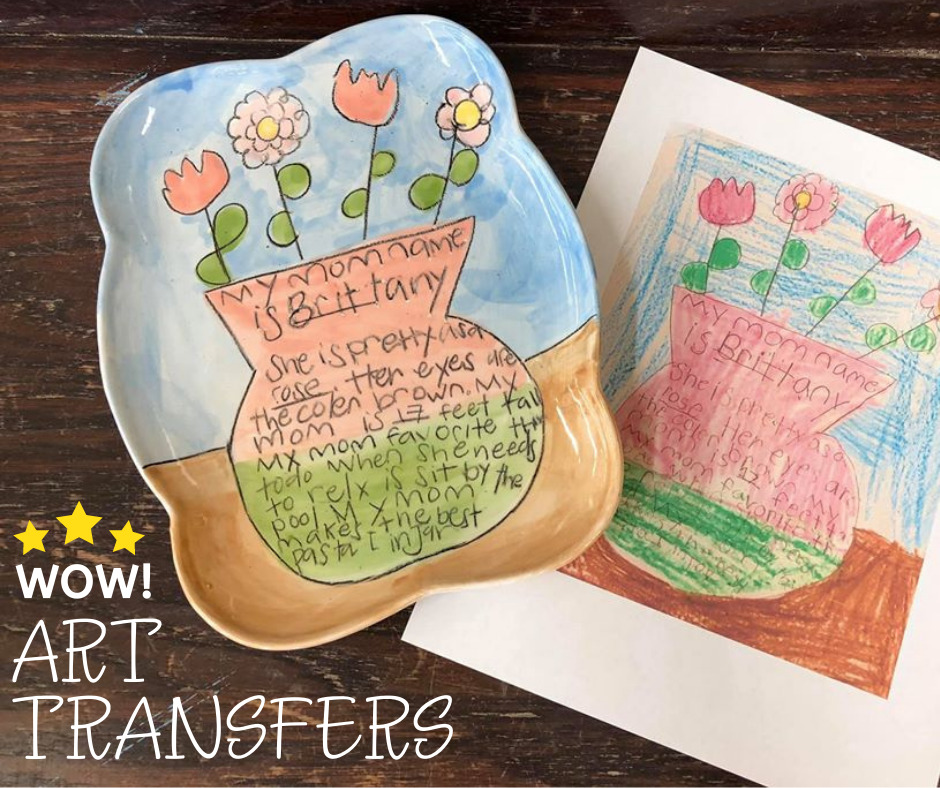
by CCSA Admin | Dec 2, 2021 | Blog
What is better than creating the perfect gift for someone you’re thankful for? Being able to
unwind in the process. This holiday season, after a long couple of years of increased decision-making and
very little normalcy, a cathartic session of painting your own pottery is a gift you can give yourself. And,
cross a gift for someone else off your shopping list.
Whether you’d rather be led in seasonally themed classes, or left unbothered to paint on your own
in a well-equipped studio space, a handmade gift serves the maker as much as the receiver. Check out
your local PYOP studio for new classes and events that will help you get in the Thanksgiving spirit, (or
the Christmas spirit if you’re ready!).
Classes are not limited to paint-your-own-pottery; Though with brand new seasonal inventory, it
is hardly limited! Many studios offer canvas painting, glass fusing, wheel throwing, and plenty more
artistic endeavors! If no class speaks to you, a classic hand-print turkey can always do the trick for a
keepsake piece.
When thinking about what pieces you may need for your home, a great trick is to envision your
table all set for Thanksgiving – pie platters, plates, napkin holders, decorations, anything you need can be
hand-painted on premium bisque pottery, encasing a memory forever. With family visiting from out of
town, creating a piece together can memorialize your cherished time. A pitcher with everyone’s
handprints for Grandma, or a picture frame to give to someone you can’t always be with; It’s a great time
to show your gratitude for the ones you love.
Our studio locator can help you find studios in your area, and see what classes they have available:
https://paintyourownpottery.com/studio-locator/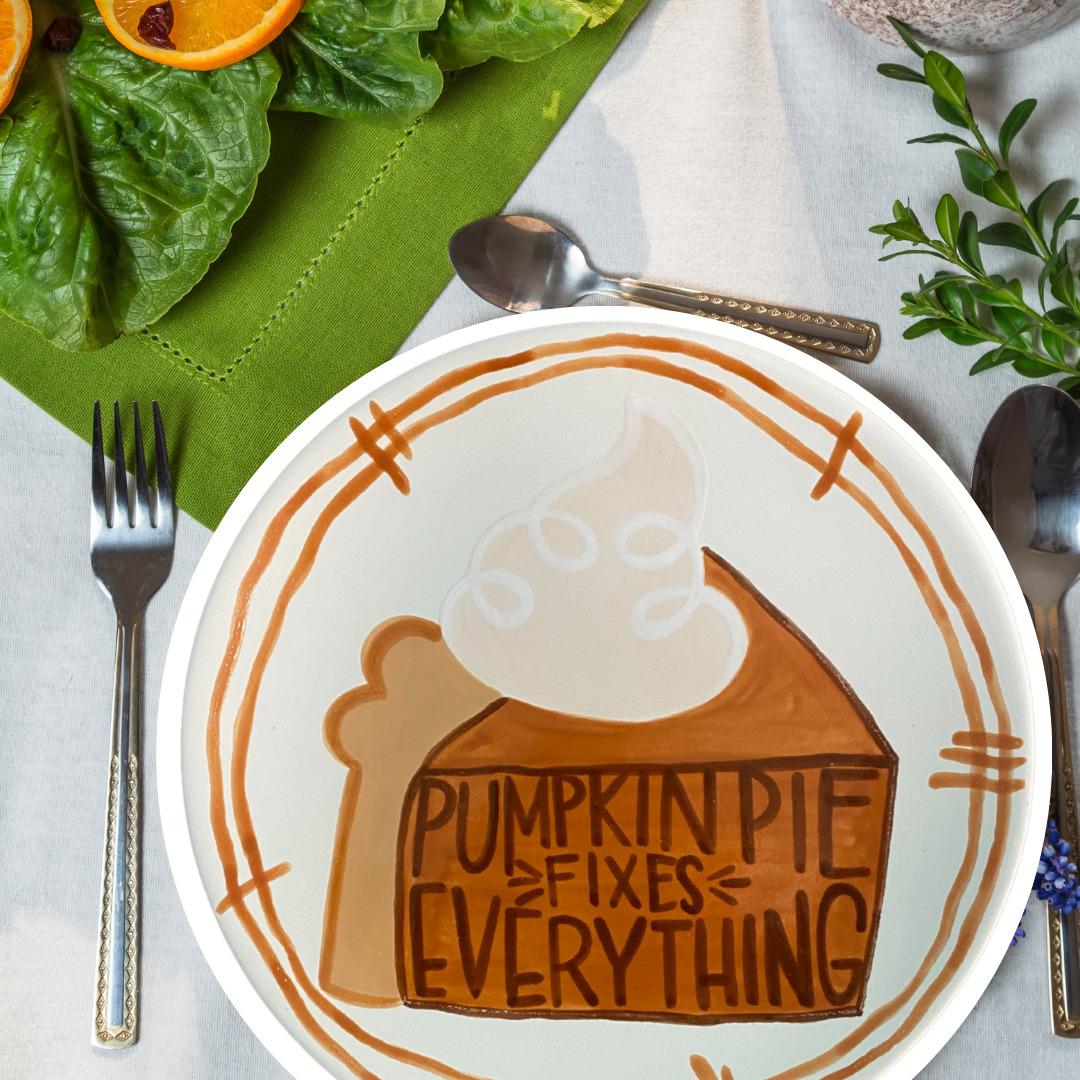
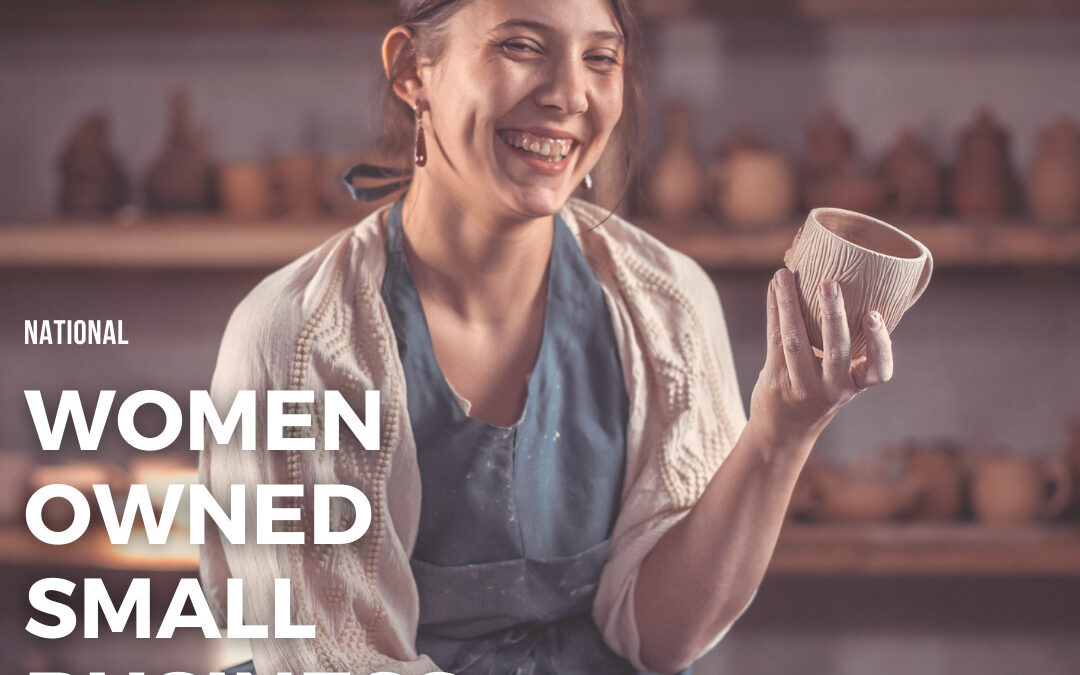
by CCSA Admin | Oct 7, 2021 | Blog
October is national women owned small business month – did you know that the majority of paint
your own pottery studios are female owned and operated? Though art has historically been a
male-dominated field, much of the craft industry is run by women and able to employ women of all
different backgrounds. A great way to support the women contributing to your community and local
economy is by visiting a female owned shop near you. (Try our store locator to find your nearest PYOP
studio!)
There are over 11 million women owning small businesses in the United States today, and this
month is designed to celebrate and highlight the ways women contribute to industry and community. It
also promotes the idea of powerful female roles to younger generations, who can continue to grow the
number of women in powerful positions with control over their employment – nothing is more motivating
than seeing other women succeed!
In 1972, women only owned 4.6% of all businesses in the United States; Now, women own 42%
of businesses in the United States. Women owned businesses also generate $1.9 trillion annually. And,
50% of female business owners are women of color. Women have made massive strides in the community
of entrepreneurs and have proved to be a dominant force.
So show support to the incredible girl bosses in your life! And remember that every purchase you
make to a local female owned shop directly benefits not only that woman but also your local community
and economy.
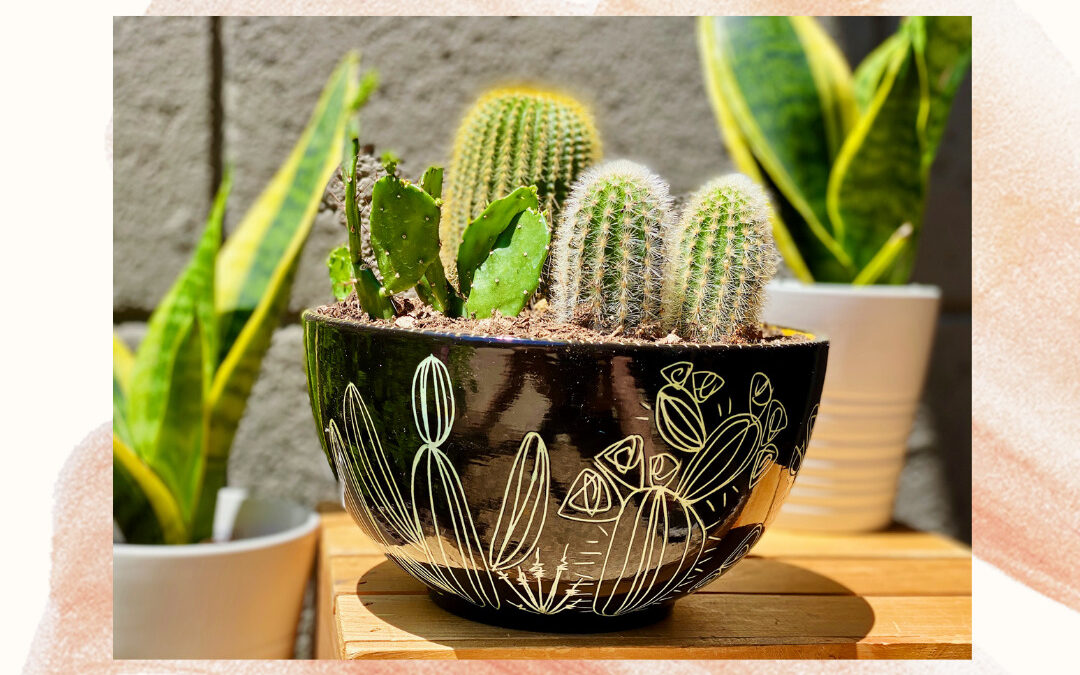
by CCSA Admin | Sep 20, 2021 | Blog
Did you know there are plenty of sure-fire ways to keep your piece looking good? Simple
strategies for all skill levels can help elevate your piece and keep the design looking attractive and neat.
Bisque pottery is pottery that has already been fired once and holds a solid shape – that is the type
of pottery you will find in a PYOP shop. Once glazed by the artist, bisque pottery is fired again so the
glaze can melt to a permanent, shiny surface. The temperature the piece reaches in the kiln is between
2300-3600 degrees, depending on the type of firing.
Because of this, graphite completely burns off in the kiln. So, feel free to sketch out your plans!
Sketching out ideas before glazing allows for a better understanding of the surface you’re working with
and time to envision how you will begin painting. But, don’t use the eraser! It is best to smudge any
mistakes with your finger, (the smudges will burn off anyways), because the oils of the eraser can actually
make that area of the pottery resistant to glaze.
Once beginning to glaze, there are many methods that can be employed to help a piece along.
Sponges can be used to create distinct shapes or to layer colors for a seamless ombre effect. Tape can be
stuck onto bare pottery, painted over, and removed to reveal a design in the negative space. Stencils can
be traced with a pencil and then filled in with color. Glazes can be diluted with a bit of water and poured
over the piece to create an organic flow of colors. Paint splatter can always be a great finishing touch as
well! Many studios keep toothbrushes on hand for easy paint splattering, as the bristles lend themselves
well to releasing the paint without getting it everywhere. You can paint black paint over layers of dry
colored paint and then scratch away from the black while it is still wet, revealing the color underneath –
this is called sgraffito and is shown in the image above.So, know there are always strategies to make your vision become a reality! Your local studio will
have their own favorite techniques as well. Find your local studio with our studio locator here.
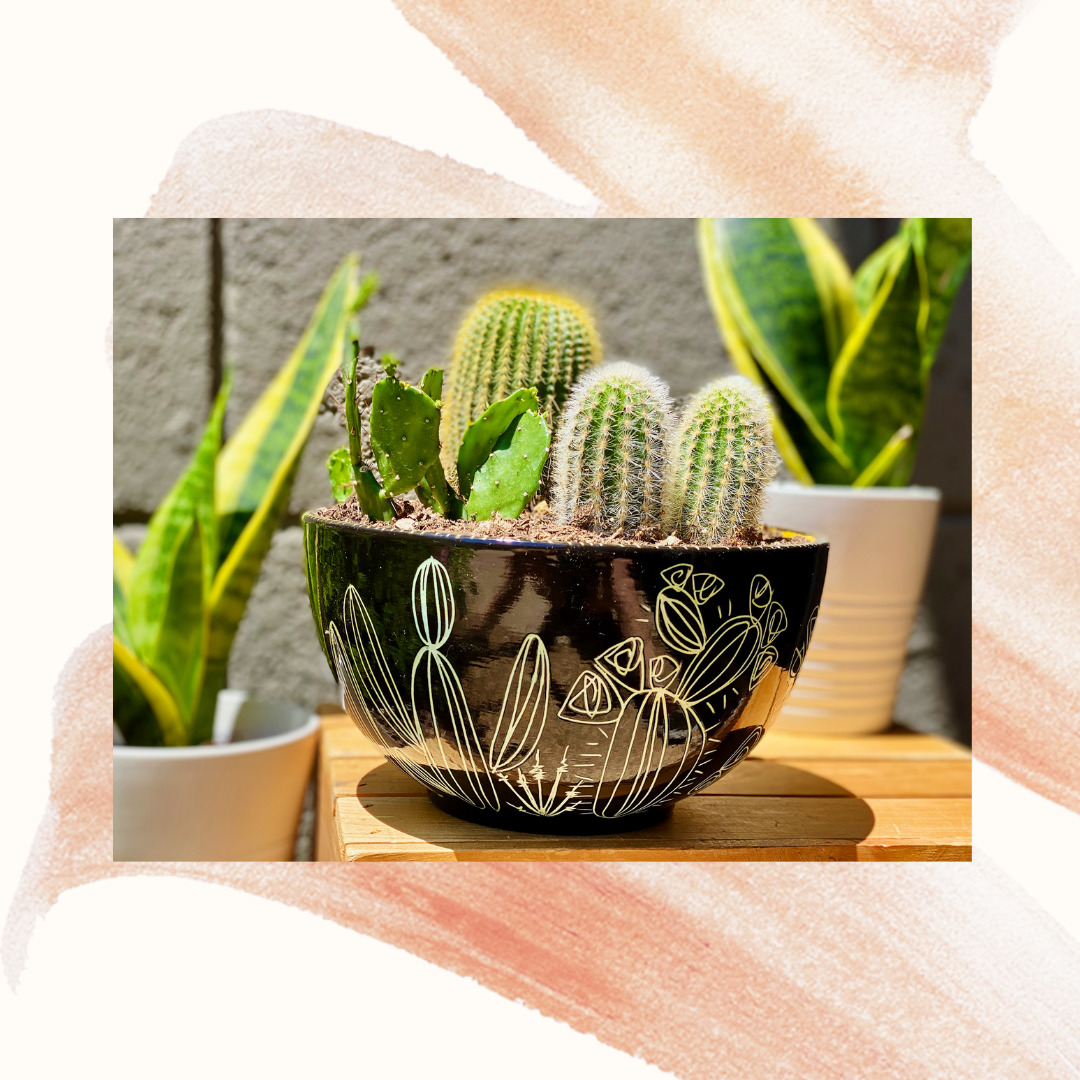
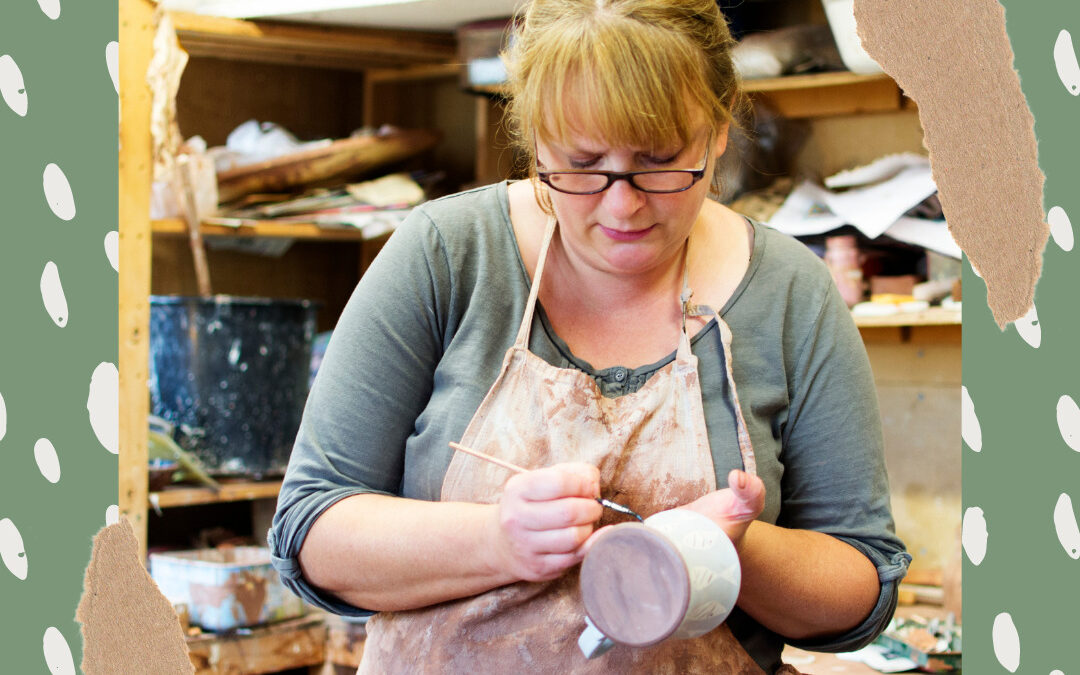
by CCSA Admin | Aug 13, 2021 | Blog
While we usually think of exercising to strengthen our muscles, crosswords to exercise our brain, even evaluating how our diet may benefit our minds, we often overlook one sphere of life – art. While it may not be everyone’s natural talent, and not everyone has the time or abilities for an at-home studio, art allows us to take a moment for ourselves and create a tangible product. Practicing art can even boost your serotonin levels, while simultaneously working on fine motor skills and emotional balance. This may be hard to believe, as it easy to get frustrated when a project does not come out quite as perfect as the Pinterest inspiration, but art truly boosts your overall mental health.
As Pablo Picasso said, “Art washes from the soul the dust of everyday life.”
And, anyone can do it. For years, art therapy has been used to treat people of all ages and abilities for a variety of purposes. For example, the reputation needed to create a mandala, (a circular pattern originally created by monks in Asia as a part of Buddhism, but now is popular globally), benefits those with Alzheimers who begin to lose the ability to identify patterns.
In other ways, we have all used art as a form of therapy or diffuses a situation without even knowing it; Summer camp counselors, parents, and teachers can all relate to giving a child some crayons until they come down. Afterall, adult coloring books were created for a reason.
In short, while we carve out the time to regularly be on our phones, scrolling through social media or creating shopping carts that we will delete soon after, why not create some time to nourish our minds? And, there is no better place to do so than a paint-your-own-pottery studio, where you don’t even need to deal with the mess.
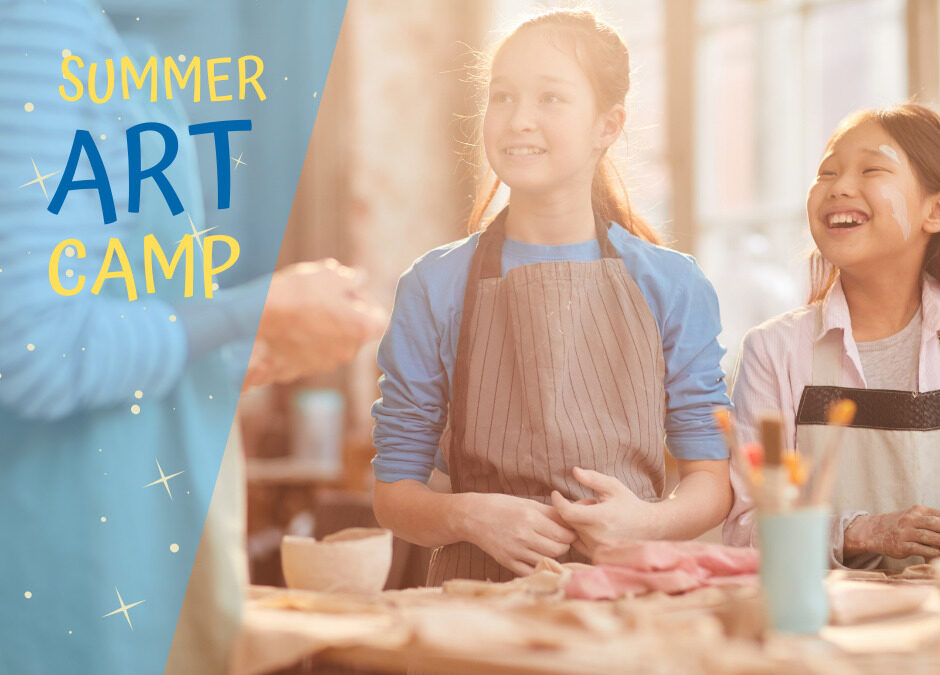
by CCSA Admin | Jun 8, 2021 | Blog
It’s time to line up some amazing art camps for your children this summer! Studios are taking the necessary precautions to keep your children and their staff safe while they create, socialize and learn! What are the MANY benefits of enrolling your children in art classes? Read on … (and be sure to read our earlier blog with more on the importance of art classes for children).
WHY ENROLL YOUR CHILD IN AN ART PROGRAM?
– ENCOURAGES DISCIPLINE – During art classes, students must exercise discipline while creating and learning about art. Students must pay attention to the instructor, study the technique, follow instructions and take constructive criticism in order to progress as an artist. Art classes lace emphasis on practice, just like any other academic lesson. In order to hone their craft, students must commit to their lessons and even take time out of class to practice.

– DEVELOPS PATIENCE AND FOCUS – Most toddlers have short attention spans. Children aged between 16-19 months are generally able to focus on a task for 2-3 minutes. However, regular drawing activity can help improve a child’s concentration levels and establish the concepts of patience and focus.
Concentrating on the intricacies of drawing is often the first step towards establishing good study habits. Setting aside time in your child’s day to allow her to engage in drawing will aid the development of his/her ability to concentrate on a range of tasks simultaneously. Drawing regularly for a short periods of time is the best way to improve their focus over time. The benefits of art classes are that children get to set aside a specific time to practice their art. As well as being provided with all the necessary materials for their creative needs.
– IMPROVES COMMUNICATION SKILLS – Drawing is an outlet for children who are non-verbal communicators. Even children with a good vocabulary aren’t always able to express their emotional needs. Thus, through drawing, children are able to develop their emotional intelligence in a creative way. Putting color pencils to paper gives children another means of communication – even if their artwork is only really understood by the child themselves in that moment.
– IMPROVES SOCIAL SKILLS – Going hand in hand with improving a child’s communication skills, taking art lessons can also improve a children’s social skills. Children learn best in social environments. Thus, in art classes, the child will make friends with other children in the art class and bond over their shared passion for art. Moreover, creating art as a group is an ideal way of mastering skills while learning from each other. In the act of sharing materials with the rest of the class, children learn to share and help out their peers, further 
– DEVELOPS MOTOR SKILLS – Holding a pencil or other drawing implement helps children develop their hand-eye coordination and fine motor skills. The more practice your child has with making simple marks on paper, the quicker they’ll develop the ability to undertake more advanced activities like coloring and handwriting. At the beginning, this is done most effectively by the repetition of simple patterns. What you tend to see is that children will initially press harder when they’re uncertain of what they’re doing and have less control. With encouragement and step-by-step guidance, it’s possible to improve their skills and build their confidence.
– DEVELOPS SPACIAL AWARENESS – Drawing can help improve a child’s visual analysis and help them understand concepts like distance, space, texture, and size. Such activities can help children understand how objects relate to each other. Which in turn will help them understand more advanced concepts like depth and volume.
Visual analysis is an essential skill for everyday life, which can be learned from a young age through artistic pursuits.
Through art classes, children will learn how to understand and interact with the surrounding environment. They will notice more details about their surroundings, and how those details relate to each other. Children can better understanding of the world around them through art. That attention to detail will spill over into other aspects of their life. Such examples include being more observant. Which will allow them to catch their own mistakes easily and become less careless while doing school work.
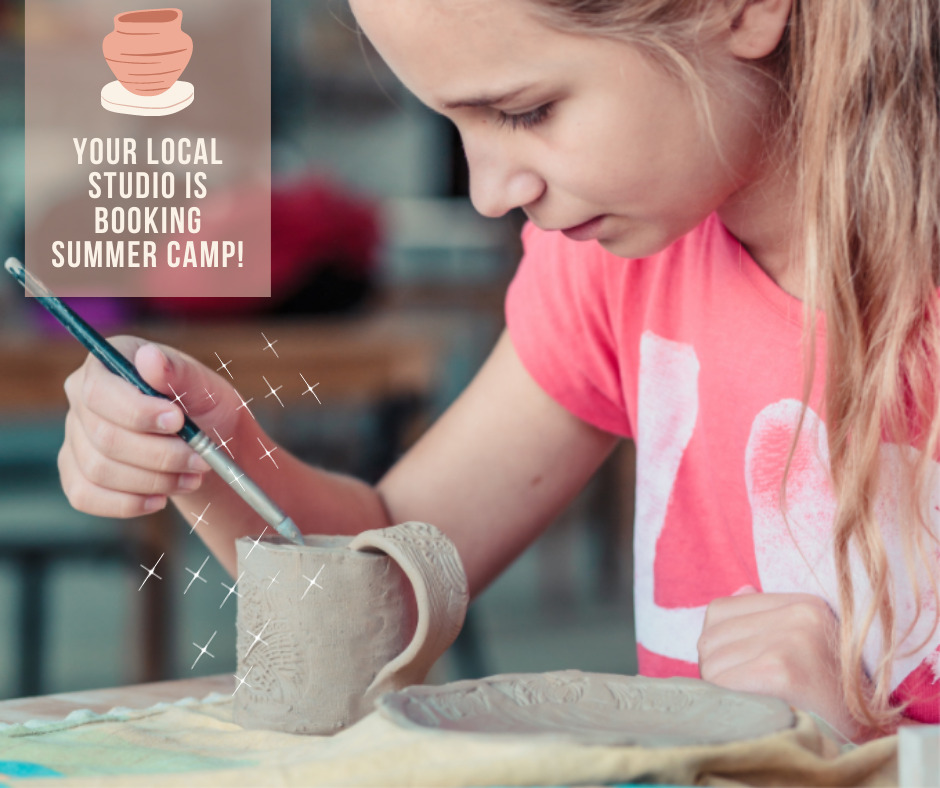
– ENCOURAGES INDEPENDENCE – Participating in art classes allow the child some freedom, freedom to be independent and curious. The student has complete control over their artwork and is responsible for the materials, technique and purpose of their work. By taking their project into their own hands, children learn how to care for the materials and how to put them back on their own. Not to mention they are encouraged by art teachers to do what they want and to ask for help only when they need it. This in turn allows them to think for themselves during lesson time and they will be more independent in school and at home.
– DEVELOPS CRITICAL THINKING – The process of observation paves the path to critical thinking. The child who has attended art class would be able to pick up the tiny details that others would not. They see the details most others take for granted, and they become more curious, which leads them to ask questions and find alternate solutions to problems. Students that are taught to examine and consider the details also helps teach students to more closely observe and analyze the world around them—skills that are vital in critical thinking.
– ALLOWS REALISTIC EXPRESSION – Although there is a lot of observational work done in art classes, that observational skill can be applied in the children’s daily lives. Diagrams, maps and graphs can be easily visualized with prior art experience. Students who can draw out anatomical diagrams from their biology textbooks will better understand the functions of that system as a whole. Thus, children will achieve a firmer grasp of the concepts and ideas presented to them. children equipped with artistic knowledge will grow up being able to articulate their ideas in a clear and concise manner. Perhaps after all that observational drawing they did in class, your child could be drawing up building blueprints in no time!
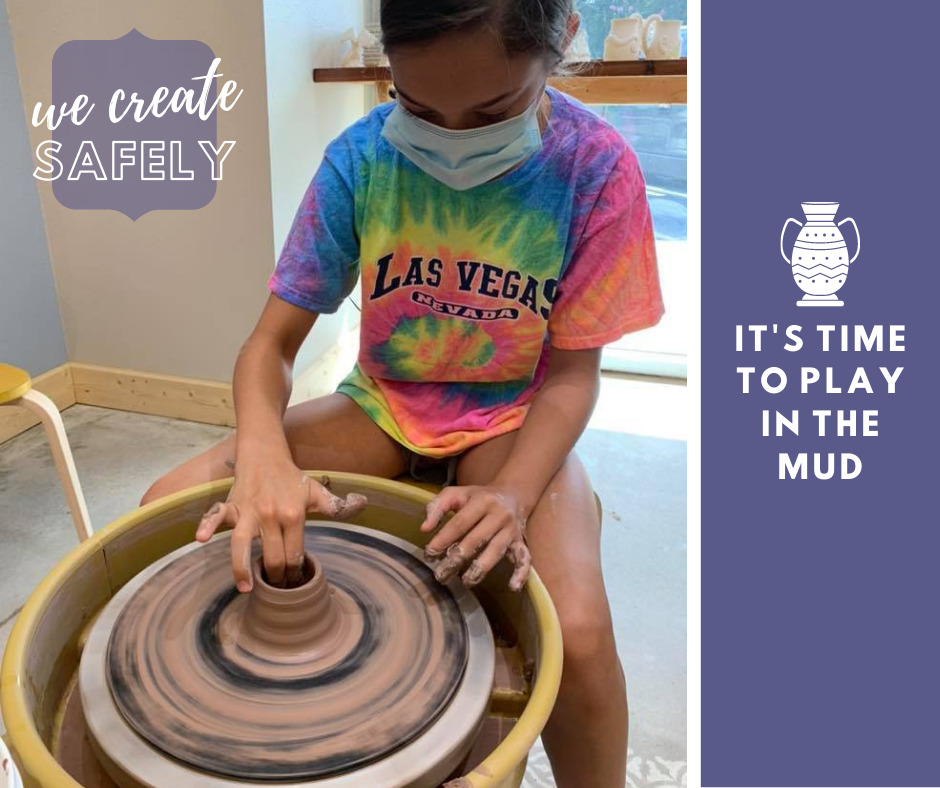
– DEVELOPS OPEN MINDNESS – Since the act of observing art can change our innate ways of thinking and how we see the world, when children learn how to make art of their own, they can achieve that level of open mindedness with time. In addition, children see their peers work and how it vastly differs from their own. Which allows them to be more understand the viewpoints of others at a young age.
– BUILDS CONFIDENCE – Art education allows students to explore and practice with new mediums and techniques, thereby finding their own “voice.” They gain confidence in the path to discovery, without fear of the final outcome. It goes without saying, that having confidence is beneficial for personal and professional relationships. That confidence will help students step out of their comfort zone, be willing to step up as a leader or pursue their dreams.
Drawing and creative skills can be a great asset and will further the development of your child, and the benefits of art classes are too good to pass up!
FIND YOUR LOCAL STUDIO AND INQUIRE ABOUT THEIR SUMMER PROGRAMS FOR KIDS!
Information from this blog is from The Visual Arts Center
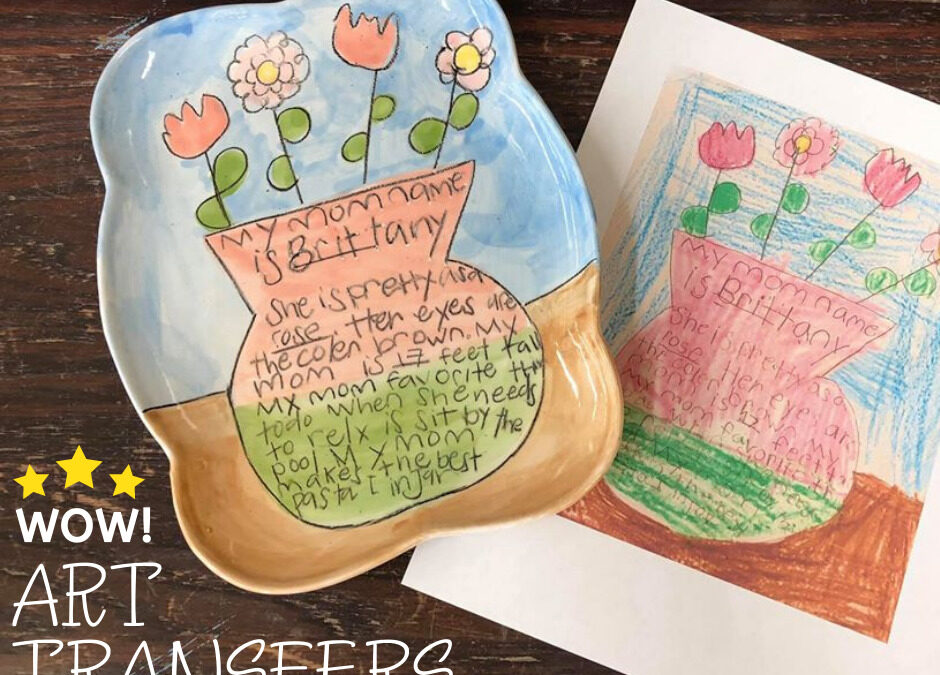
by CCSA Admin | Apr 16, 2021 | Blog
Visit your local studio and make a truly unique piece of pottery – from your own original piece of art!
Whether it’s a black-and-white sketch, color drawing or hand-written recipe, it can be transferred onto pottery.
Preparing your original art: we HIGHLY recommend you make a color copy of the original artwork and bring THE COPY into the studio. You do NOT need the original to create an art transfer.
The process of transferring the artwork to a piece of pottery will depend on your studio, as there are a few ways to transfer your image. Your local studio may also offer custom painting services, allowing you to hand over the project to their artist! Project time frame and cost will also depend on your local studio.
What will you create?! Think gifts, anniversaries and keepsakes. Have fun with it!
